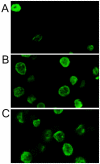Creating rat model for hypoxic brain damage in neonates by oxygen deprivation
- PMID: 24358300
- PMCID: PMC3866139
- DOI: 10.1371/journal.pone.0083589
Creating rat model for hypoxic brain damage in neonates by oxygen deprivation
Abstract
Current study explores the feasibility of using a non-surgical method of oxygen deprivation to create Hypoxic brain damage in neonatal rats for medical studies. 7-day-old Sprague Dowley (SD) rats were kept in a container with low oxygen level (8%) for 1.5h. A second group had bilateral cephalic artery ligation before the 1.5h-low oxygen treatment, a method similar to the popular Rice method, to expose the brain to both hypoxic and ischemic situations. Short term neural functions and brain water weights were evaluated 1 day after the hypoxic treatment. Brain pathology and histology were also examined at 1 day and 3 days after the hypoxic treatment. Both groups showed impaired neural functions and increased brain water weight compared to the controls. Histology studies also revealed injuries in the subcortex, hippocampus and lateral ventricle in the brains from both groups. There is no significant difference in the degree of brain damages observed in the two groups. Our work demonstrated that oxygen deprivation alone is sufficient to cause brain damages similar to those seen in Hypoxic-ischemic brain disease (HIBD). Because this method avoids the invasive surgical procedure and therefore reduces the stress and mortality of laboratory animals during the experiment, we recommend it to be the favorable method for creating rat models for HIBD studies.
Conflict of interest statement
Figures








References
Publication types
MeSH terms
Substances
LinkOut - more resources
Full Text Sources
Other Literature Sources

